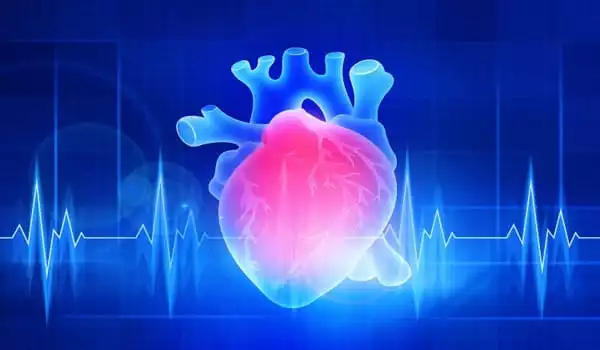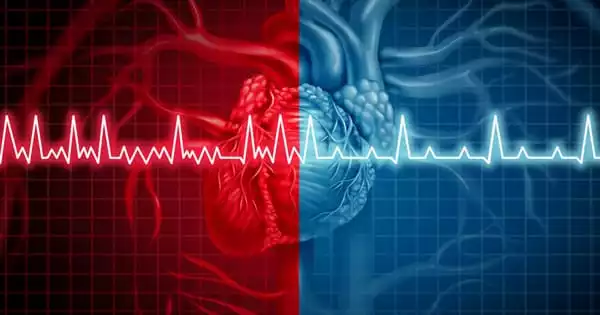A computer algorithm based on artificial intelligence (AI) developed by Mount Sinai researchers was able to learn how to identify subtle changes in electrocardiograms (also known as ECGs or EKGs) to predict whether a patient was experiencing heart failure.
“We demonstrated that deep-learning algorithms can recognize blood pumping problems on both sides of the heart from ECG waveform data,” said Benjamin S. Glicksberg, PhD, Assistant Professor of Genetics and Genomic Sciences at Mount Sinai and a member of the Hasso Plattner Institute for Digital Health, and a senior author of the study published in the Journal of the American College of Cardiology: Cardiovascular Imaging. “Normally, diagnosing these types of heart conditions necessitates costly and time-consuming procedures. This algorithm, we hope, will allow for a quicker diagnosis of heart failure.”
The study was led by Akhil Vaid, MD, a postdoctoral scholar who works in both the Glicksberg lab and the lab of Girish N. Nadkarni, MD, MPH, CPH, Associate Professor of Medicine at Mount Sinai, Chief of the Division of Data-Driven and Digital Medicine (D3M), and a senior author of the study.
We wanted to push the state of the art by developing AI capable of understanding the entire heart easily and inexpensively.
Dr. Akhil Vaid
Heart failure, or congestive heart failure, affects approximately 6.2 million Americans and occurs when the heart pumps less blood than the body requires. For many years, doctors relied heavily on an imaging technique known as an echocardiogram to determine whether a patient had heart failure. While useful, echocardiograms are time-consuming procedures that are only available at a few hospitals.
Recent advances in artificial intelligence, however, suggest that electrocardiograms, a widely used electrical recording device, could be a quick and easily accessible alternative in these cases. Many studies, for example, have demonstrated how a “deep-learning” algorithm can detect weakness in the left ventricle of the heart, which pushes freshly oxygenated blood out to the rest of the body. The researchers described the development of an algorithm that assessed not only the strength of the left ventricle but also the strength of the right ventricle, which takes deoxygenated blood streaming in from the body and pumps it to the lungs.

“Although appealing, using ECGs to diagnose heart failure has traditionally been difficult for physicians. This is due in part to the lack of established diagnostic criteria for these assessments, as well as the fact that some changes in ECG readouts are simply too subtle for the human eye to detect “Dr. Nadkarni stated. “This study represents an exciting step forward in discovering information hidden within ECG data that can lead to improved screening and treatment paradigms using a relatively simple and widely available test.”
An electrocardiogram is typically performed in two steps. Wire leads are taped to various parts of a patient’s chest, and a specially designed, portable machine prints out a series of squiggly lines, or waveforms, representing the heart’s electrical activity in minutes. These machines can be found in the majority of hospitals and ambulances across the United States and require very little training to operate.
The researchers programmed a computer to read patient electrocardiograms as well as data extracted from written reports summarizing the results of corresponding echocardiograms taken from the same patients for this study. In this case, the written reports served as a standard set of data for the computer to compare with the electrocardiogram data in order to learn how to detect weaker hearts.
Natural language processing programs aided the computer in extracting information from written reports. Meanwhile, to assist the algorithm in learning to recognize pumping strengths, special neural networks capable of discovering patterns in images were incorporated.
“We wanted to push the state of the art by developing AI capable of understanding the entire heart easily and inexpensively,” said Dr. Vaid.
From 2003 to 2020, the computer read more than 700,000 electrocardiograms and echocardiogram reports obtained from 150,000 Mount Sinai Health System patients. Four hospitals’ data were used to train the computer, while data from a fifth hospital was used to see how the algorithm would perform in a different experimental setting.
“A potential advantage of this study is that it involved one of the largest collections of ECGs from one of the most diverse patient populations in the world,” said Dr. Nadkarni.
The algorithm appeared to be effective at predicting which patients would have healthy or very weak left ventricles based on preliminary results. Strength was defined in this case by left ventricle ejection fraction, which is an estimate of how much fluid the ventricle pumps out with each beat as seen on echocardiograms. A healthy heart has an ejection fraction of 50% or higher, whereas a weak heart has one that is equal to or less than 40%.
The algorithm was 94% accurate in predicting which patients had a healthy ejection fraction and 87% accurate in predicting those who had an ejection fraction less than 40%. The algorithm, however, was not as good at predicting which patients would have slightly weakened hearts. In this case, the program predicted patients with an ejection fraction of 40 to 50 percent with 73 percent accuracy.
According to the results, the algorithm also learned to detect right valve weaknesses from the electrocardiograms. More descriptive terms extracted from echocardiogram reports were used to define weakness in this case. In this case, the algorithm predicted which patients had weak right valves 84% of the time.
“Our findings suggested that this algorithm could eventually assist doctors in correctly diagnosing failure on either side of the heart,” Dr. Vaid said. Finally, further research suggests that the algorithm may be effective in detecting heart weakness in all patients, regardless of race or gender.
“Our findings suggest that this algorithm could be a useful tool for clinical practitioners in combating heart failure in a variety of patients,” Dr. Glicksberg added. “We are currently designing prospective trials to test its effectiveness in a more real-world setting.”
















